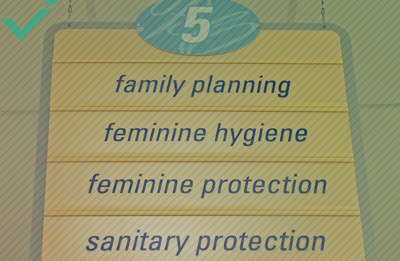Let’s be honest—everyone wants to expand sales. And, in a world where business has increasingly moved online, that means online sales tactics are going to become even more valuable. This is true no matter what products you sell or services you offer.
By definition, this means you have to maintain a top-ranked digital destination, or at least one with sticky, great content that draws in users—whether they initially intend to buy anything from you or not. There are several tried and true tactics to increase your website’s authority, and these range from the technical to the creative.
Just remember to ask yourself one basic question: How can I help people access my site faster and easier? Once you start thinking this way and learn the toolset, the rest will fall into place.
WHAT IS WEBSITE AUTHORITY?
Although it may sound a bit pretentious, website authority is more or less an easy concept to grasp. Basically, it refers to how high in a “natural” search result your website will appear for a specific query.
If a user is looking for an awesome pair of football shoes or a gaming device, for example, they will type certain words into the browser. The more your site “matches” or has authority based on the keywords entered, the higher your site will appear in search results.
Obtaining this authority, however, is where the magic of SEO (search engine optimisation) comes in. Basically, you have to create content for your website that will rank high for keywords used by your potential customers or target audience.
Essentially, you have to get into your customer’s head to think about not only what you have to offer, but why your customers need you. It sounds like a bit of a game (and it is); however, with both research and practice, this becomes second nature.
But this is not all. The content you create is not just about stringing words together but using those words to create value. In this case, you have to convince your customer to buy sports shoes from you as opposed to someone else. Beyond price, the copy of the text and any other content must be compelling.

HOW IMPORTANT IS CONTENT IN DETERMINING WEBSITE AUTHORITY?
Content, in this world, is not only king; it is the royal flush. The quality of individual web pages, and your site as a whole, will contribute to how well you rank for the kinds of content and products you offer.
How you create this content is up to you, and largely dependent on what you are trying to sell and how your customers expect to interact with you on their customer journey.
For example, a website that sells a certain kind of new cleaning device might also have a blog post that discusses how the product can be used (or why it is better than its competition). This is also a way to develop “soft” topics that not only bring customers to your site but convince them that your service or product is necessary or even mandatory.
There are, however, many kinds of content marketing that go far beyond “just” writing an article or posting funny pictures on Instagram. Case studies are a valuable tool to use if you can. Finding the right communication style is just as important as what you say.
This also means realising that pictures, video, and charts can all be used to increase a site’s rank—and that keywords count even in online video! Don’t rule out the benefit of a well-placed (and properly labelled) data chart.
And don’t, of course, forget a powerful call to action! It’s all very well to get someone’s attention; keeping it through the final sale, however, is the ultimate goal, and that takes building an effective communications channel. Most of that has to do with creating content that moves the customer from point of attraction to point of sale as quickly and enjoyably as possible.
KEYWORD FREQUENCY
Keyword frequency is so important to authority that it requires a category all its own.
At its root, keyword strategy involves not only the placement of certain keywords themselves but the frequency of such placement. While keyword frequency isn’t as important as it used to be, you can’t expect to gain a lot of authority if you only briefly discuss a given topic.
The one word of warning? It’s all very good to use keywords, but if the content doesn’t actually say what you mean, you might as well just publish a list of random words. Commonly known as “keyword stuffing”, the antiquated practice of jamming as many keywords into a text as possible is quickly identified by search engines as untrustworthy.
Another tactic to keep in mind is the use of so-called “long-tail” keywords—short phrases that are more specific to your topic than the obvious competition. The more accurate your long-tail keywords, the more effectively you will route highly relevant traffic to your site.
META DESCRIPTIONS AND TAGGING
Beyond awesome content, you also need to make sure that every part of every page and post is optimised. This includes, of course, meta descriptions. These help search engines and searchers understand with more detail what your niche is.
Tagging your post properly is also important—no matter what blogging software or social media you use.

WHAT ABOUT BACKLINKS?
Search engines like Google calculate a domain’s “authority” by other means than just keywords.
This score includes a number of different metrics, including loading speed and number of quality inbound links. For example, Wikipedia is a good example of a site with a high “back-linking” score, because so many other sites and online resources cite Wikipedia pages as an external source.
Backlinks are a critical source of authority, but they are hard to amass. Paying others to link to your site is a grey area of respectability, and the best way to achieve a good link score is to serve up valuable content that cannot be found elsewhere.
There is a very simple, three-step process to figure out (and improve) how highly ranked your current site is via back-linking.
1. Audit Your Link Profile
Your backlinks should consist of links not only from a wide variety of sites but from those that have high authority. For example, if selling an ebook, it is good to have lots of reviews linking back to your book’s actual page from highly trafficked book review sites. Free SEO tools like SEMrush Backlink Checker can help you measure site health. Google’s Disavow Tool can also help you strengthen your profile by dumping poor or undesirable links.
2. Create High-Quality, Unique Content
This means not only great writing and design but improving the stats that come with higher traffic, like bounce rate, organic traffic, etc.
3. Earn High-Quality Inbound Links
Earning links from websites with high authority themselves is critical in building your own domain authority. One easy way to build this is with the skyscraper method.
The skyscraper method is an SEO practice that involves finding content that ranks well for keywords you want to rank for. You then create content that is better than the top ranking posts. From here, all you have to do is use SEO tools to find all of the sites that are linked to your competitor’s content, and ask those sites to replace their old content with your own. Sounds simple, but it isn’t. This process is often one of the hardest and most time-consuming.
We’ve only just scratched the surface on building website authority, and the process itself is an ongoing endeavour. As long as you continue to put yourself in your customer’s shoes and refine your practices, your site’s rank in search results is likely to improve.

